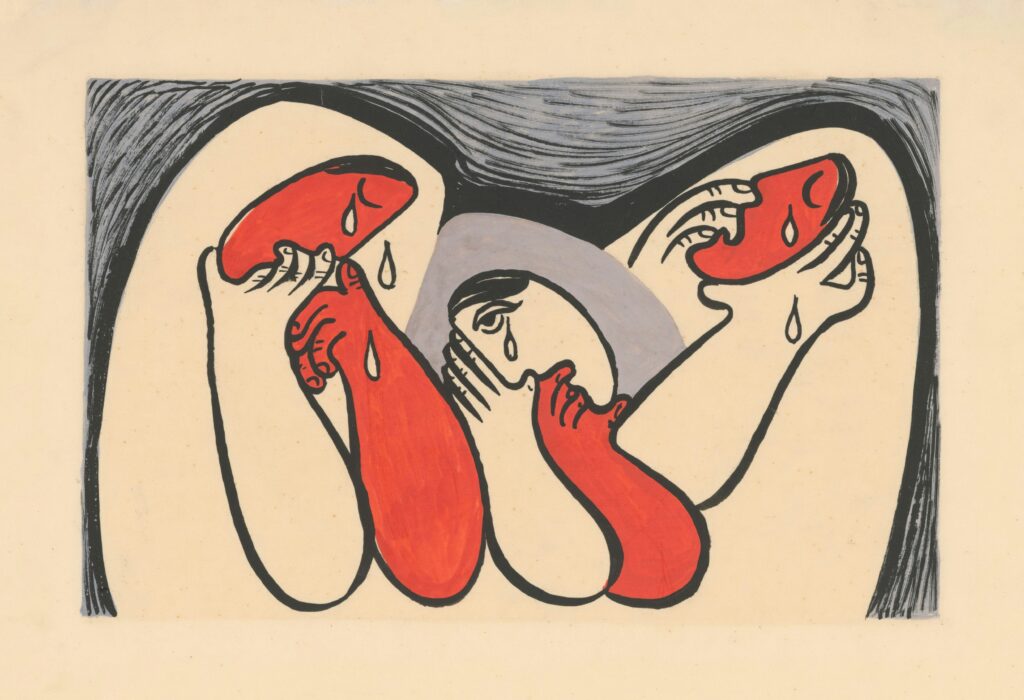During Pride Month, we’re reminded how often language has been used to erase or distort identity. Terms like gender dysphoria and body dysmorphia are often confused—or at times used interchangeably—even by well-meaning people. But the difference between them isn’t just clinical. It’s cultural and personal, and it matters deeply.
Body dysmorphia is a psychiatric diagnosis. It’s a condition defined by obsessive distress over perceived flaws in appearance, disconnected from how others see the body. Gender dysphoria is something else entirely. It’s not a delusion or distortion. It’s the pain of being unseen or misrecognized, of moving through a world that treats your true self as something to debate, correct, or contain.
To collapse these two experiences into one is to misunderstand them both. And in doing so, we risk pathologizing trans and gender-diverse people simply for existing in bodies that don’t fit narrow expectations. Body dysmorphia, too, carries intense psychological distress, and when it’s dismissed as vanity or minimized as insecurity, people are left to struggle alone.
Understanding the difference between body dysmorphia and gender dysphoria is not just about language. It’s about dignity, safety, mental health, and the right to self-definition.
What Is Gender Dysphoria?
Gender dysphoria describes the psychological and emotional distress that can arise when a person’s gender identity is different from the sex they were assigned at birth. It’s not about disliking a specific feature or striving for a certain aesthetic. It’s about the disconnect between one’s internal sense of self and how that self is perceived, labeled, or constrained by others. This distress can show up in many ways—from feeling out of place in one’s body, to experiencing anxiety in gendered spaces, to navigating systems that deny or invalidate a person’s gender identity.
Importantly, not all trans or gender-diverse people experience gender dysphoria. Being trans is not a disorder. What causes pain is often the world’s refusal to affirm or accommodate someone’s gender, not their identity itself. The harm comes from being forced to live as someone you’re not, or from having to constantly explain, justify, or defend your existence.
Medical and mental health professionals once viewed gender dysphoria through a highly pathologized lens. But over time, many have shifted toward affirming care models that focus not on “fixing” a person, but on supporting them in aligning their external life with their internal truth through social transition, medical transition, or other forms of self-expression.
This distinction is essential: addressing gender dysphoria doesn’t mean treating a mental illness. It means honoring someone’s identity and helping reduce the harm caused by rejection, misunderstanding, and systemic barriers.
Defining Body Dysmorphia
Body dysmorphic disorder (BDD) is a recognized mental health condition that causes people to fixate on perceived flaws in their appearance—flaws that are either minor or not visible to others at all. It’s not just low self-esteem or dissatisfaction with body image. It’s a cycle of obsessive thoughts and compulsive behaviors that can significantly disrupt daily life.
People with BDD may spend hours scrutinizing, hiding, or attempting to fix a feature they believe is wrong, often seeking reassurance or avoiding mirrors entirely. The distress isn’t about identity; it’s about distortion. What the person sees or believes about their body doesn’t match how others perceive them. This disconnection can lead to severe anxiety, depression, social withdrawal, and even self-harm.
And yet, body dysmorphia is frequently misunderstood and even dismissed. It can be mistaken for vanity or confused with normal appearance concerns, especially in cultures where body critique is routine. This minimization can delay care and deepen isolation.
At treatment centers like ‘Ai Pono, we take these experiences seriously. Just as mislabeling gender dysphoria causes harm, so does overlooking the intensity and suffering that BDD creates.

What Helps: Responding With Affirmation and Care
When gender dysphoria and body dysmorphia are misunderstood, or mistaken for the same experience, people are often met with care that doesn’t reflect what they truly need. While both involve body-related distress, the paths to relief are different.
How Body Dysmorphic Disorder Is Treated
- Cognitive Behavioral Therapy (CBT), especially models tailored for BDD
- Exposure and Response Prevention (ERP) to reduce avoidance and compulsive behaviors
- SSRIs or other medications when clinically appropriate
- Psychoeducation about body image, perception, and cognitive distortions
- Relapse prevention strategies and support for co-occurring conditions
Supporting Someone With Gender Dysphoria
Unlike BDD, gender dysphoria is not a mental illness. It reflects a deeply felt experience of identity, often shaped by cultural, social, and systemic forces. Alleviating distress involves affirmation, agency, and space to be seen.
- Affirm their identity without needing to fully understand it
- Use the name and pronouns they ask for, consistently and without hesitation
- Ask open, respectful questions if they invite conversation—but don’t press for details
- Avoid centering your own confusion, curiosity, or discomfort
- Support access to gender-affirming care, whether that means clothing, voice coaching, therapy, or medical options
- Challenge transphobic language, policies, or assumptions when it’s safe to do so
Clarity Is a Form of Care
Confusing gender dysphoria with body dysmorphia may seem like a small misstep, but its impact isn’t small at all. The language we use and the frameworks we apply shape the kind of care people receive. They shape who is pathologized, who is affirmed, and who is quietly pushed to the margins.
During Pride Month and beyond, we’re called to do better: to understand that gender dysphoria is not a flaw to fix, and that body dysmorphia is not vanity. Both deserve compassion, and both deserve accuracy. When we can name what someone is feeling without collapsing it into something it’s not, we create space for healing, affirmation, and connection. That clarity isn’t just semantic. It’s a form of respect.
If you or someone you care about is struggling with an eating disorder, know that help is available, and recovery is possible. Reach out to get started today.
